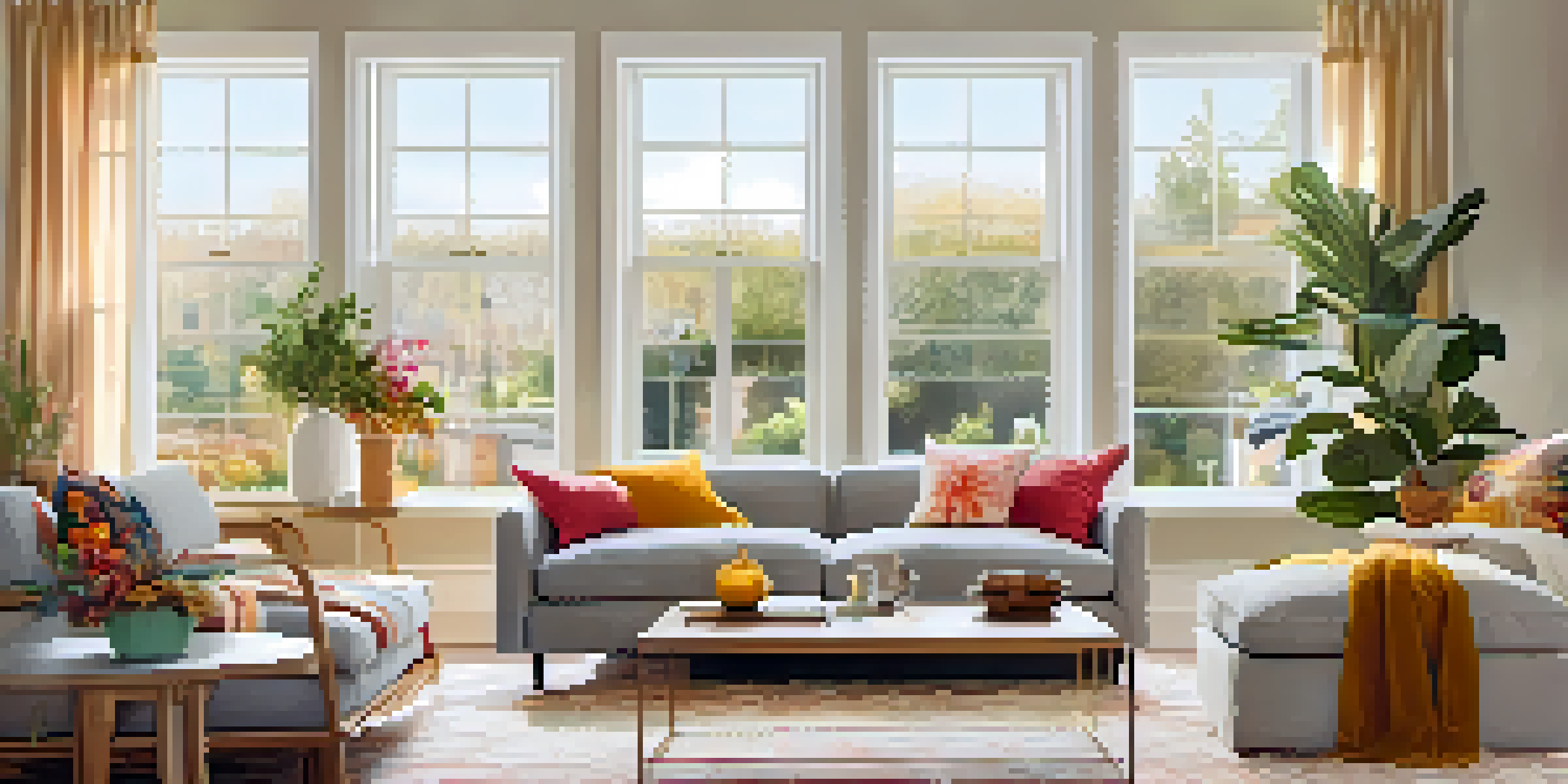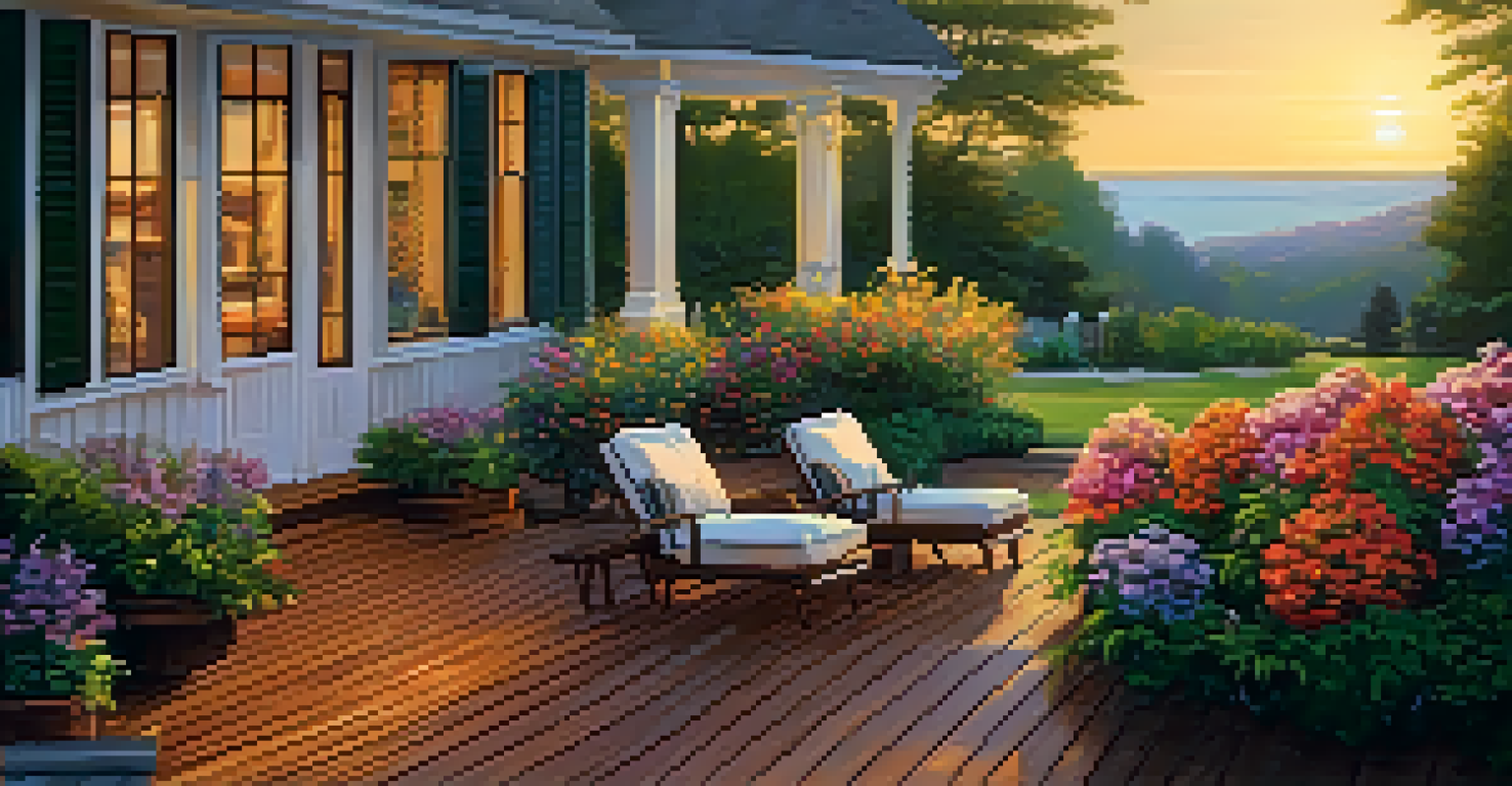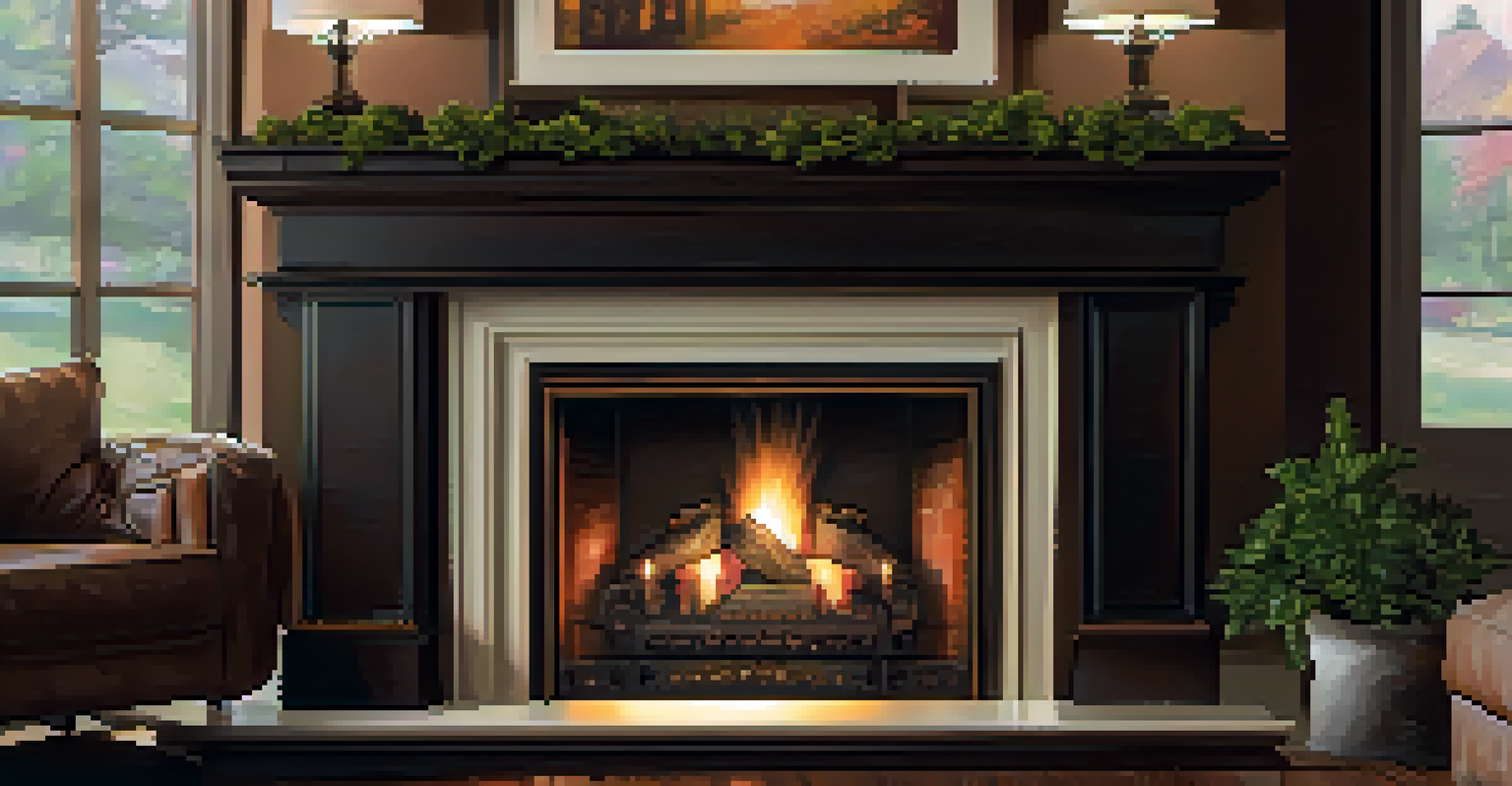Open House Photography Tips for Capturing the Best Angles

Understand the Importance of Natural Light
Natural light can be your best friend when photographing homes. It creates a warm and inviting atmosphere that can highlight a property's best features. Aim to shoot during the golden hour, which is shortly after sunrise or before sunset, when the light is soft and flattering.
A picture is worth a thousand words.
Avoid harsh midday sunlight that can cast unflattering shadows and wash out colors. If the house has large windows, open the curtains and let the light flood in to brighten the space. This not only makes the room look bigger but also adds a sense of warmth and comfort.
Remember, the goal is to create an inviting feel that potential buyers can envision themselves in. Good lighting can make a simple room look majestic, so be mindful of the time of day you choose for your shoot.
Choose the Right Angles for Each Room
Angles can dramatically change the perception of a space in photographs. For example, shooting from a corner can make a room appear larger and more open. Experiment with different angles to find what showcases the room's layout and unique features best.

Take multiple shots from various positions to give yourself options later. A wide-angle lens can also be a game-changer, allowing you to capture more of the room in a single frame without distortion. Just be cautious not to overdo it, as it can sometimes make spaces look unrealistic.
Harness Natural Light for Photos
Utilizing natural light during the golden hour enhances the warmth and appeal of a home in photographs.
Ultimately, the right angle can tell a story about how a space flows and functions, which is crucial for attracting potential buyers.
Declutter and Stage the Space
A clean and well-staged home is essential for effective photography. Clutter can distract from the home's features and make spaces feel smaller. Before the shoot, ensure that the area is tidy and that personal items are minimized, allowing potential buyers to envision their own lives in the space.
Good photography is all about the light.
Staging goes beyond just cleaning; it involves arranging furniture and decor to create an appealing aesthetic. Consider adding fresh flowers, tasteful artwork, or strategically placed accessories to create focal points that draw the eye.
A well-staged home can evoke emotions, making it more memorable to potential buyers. Think of it as creating a backdrop for a story, where each element plays a part in showcasing the home's character.
Use Tripods for Stability and Consistency
Using a tripod is a simple way to ensure stability and consistency in your shots. It helps eliminate camera shake, which can lead to blurry images, especially in low-light conditions. Plus, with a tripod, you can experiment with longer exposures to capture more detail in shadows and highlights.
Additionally, a tripod allows you to frame your shots more precisely. You can set it to a specific height and angle, ensuring that all your images have a uniform look, which is important for creating a cohesive portfolio.
Highlight Unique Home Features
Capturing close-ups of distinctive elements, both inside and outside, can effectively showcase a home's value.
This consistency can help potential buyers feel more comfortable and engaged when viewing the listing, enhancing their overall experience.
Highlight Unique Features and Selling Points
Every home has unique features that set it apart, and it's crucial to highlight these in your photography. Whether it's an intricate fireplace, custom cabinetry, or a stunning view, make sure to capture these elements in your shots. Close-up images can be effective here, showcasing the craftsmanship and details that make a home memorable.
Don't forget outdoor features as well, like a beautifully landscaped garden or a spacious deck. These aspects can often be a deciding factor for potential buyers, so make sure they are prominently featured in your portfolio.
By focusing on these selling points, you not only attract interest but also convey the home's value effectively.
Edit Photos for a Professional Finish
Editing is an essential step in the photography process that can elevate your images from good to great. Use editing software to adjust brightness, contrast, and saturation to create a polished look. However, be careful not to over-edit; the goal is to enhance the image while remaining true to what the home actually looks like.
Consider using presets or filters that maintain a natural look while making colors pop. This can be particularly effective for showcasing the warmth of wood tones or the vibrancy of garden colors.
Edit for a Polished Finish
Proper editing can transform good images into captivating ones, attracting more potential buyers.
A professional finish can make your photographs stand out in a crowded market, making potential buyers more likely to engage with the listing.
Utilize Online Platforms for Maximum Exposure
Once your stunning photos are ready, it's time to share them with the world. Utilize online platforms such as real estate websites, social media, and virtual tours to maximize exposure. High-quality images can grab attention and generate leads, so make sure they're front and center in your marketing efforts.
Consider creating a dedicated website or landing page for the open house, showcasing your best shots along with detailed descriptions of the property. This can serve as a powerful tool to engage potential buyers and provide them with all the information they need.

In today's digital age, effective online marketing can significantly impact the success of your open house, driving more traffic and interest in the property.